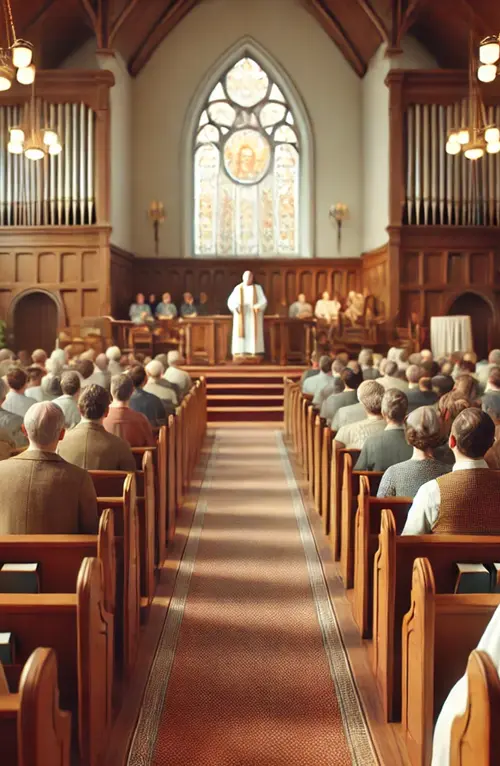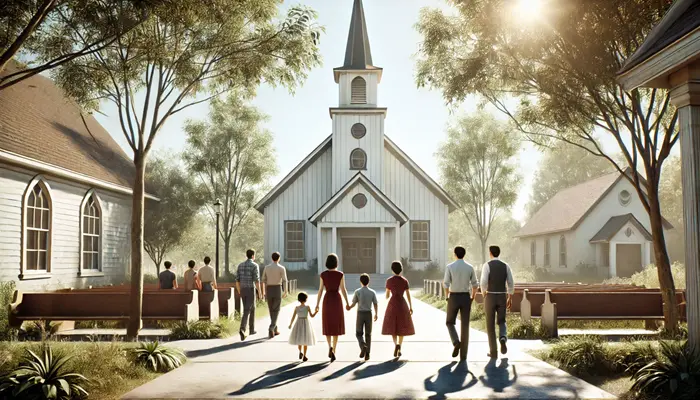Over the years, many long-standing church traditions have gradually fallen out of favor as times and attitudes have changed.
While some customs were once seen as vital aspects of church life, they have been replaced or adjusted to better fit today’s world.
Here are seven church traditions that are becoming less common, along with the reasons behind their decline.
1. Dressing Up for Church
In the past, attending church meant putting on your finest clothes. People had specific outfits just for Sundays, and getting them dirty was almost unforgivable.
Nowadays, this tradition has shifted dramatically. It’s now typical to see churchgoers in casual attire, such as jeans, sandals, or even shorts.
This reflects a broader move toward a more relaxed and inclusive atmosphere where the focus is on participation, not appearance.

2. Evening Services on Sundays
Years ago, attending an evening service on Sundays was part of the regular routine for many churchgoers.
Families would spend most of their Sundays at church, often attending multiple services.
However, this tradition has nearly disappeared, with many churches choosing to concentrate their efforts on Sunday morning services. This change mirrors the need for simpler schedules that better suit modern lifestyles.
3. Lengthy Announcements
Church services once included a lengthy time slot dedicated to announcements.
These would cover everything from upcoming events to ministry needs, often taking 10-15 minutes.
Today, most churches have cut down on this practice.
Announcements are now often shown on screens before the service begins or sent out via email, allowing the service to flow more smoothly and keeping the focus on worship.

4. Printed Church Bulletins
Receiving a bulletin as you entered church was once a given. These handouts provided information about the service, upcoming events, and sometimes included sermon notes.
However, many churches have stopped using printed bulletins, opting instead to share this information digitally.
This change not only reduces paper use but also makes it easier for people to stay informed through their devices.
5. Strict No-Food Policies
There was a time when bringing food or drinks into the church sanctuary was considered disrespectful.
Even chewing gum was off-limits, and only the speaker was allowed to have a glass of water. Today, these rules have loosened significantly.
It’s now common to see people with coffee cups or snacks in hand during services, as churches aim to create a more welcoming and relaxed environment.

6. Pastors Sitting on the Platform
In many churches, it was once standard for pastors and church leaders to sit on the platform during services, with the senior pastor’s chair often being the most prominent.
This tradition has largely disappeared, with many pastors choosing to sit among the congregation instead.
They now only come to the platform when it’s time to preach or lead a specific part of the service, reflecting a shift toward a more inclusive and less hierarchical approach.
7. Passing the Offering Basket
The practice of passing an offering basket during church services was once a major part of the service, sometimes taking a considerable amount of time.
In some cases, churches even had security in place to protect the collected funds.

Today, this tradition is fading as digital giving options like online donations, text giving, and QR codes become more popular. This shift not only saves time but also fits better with the digital habits of modern churchgoers.
As society evolves, so do the practices within the church.
These changes reflect a broader effort to make church more accessible, welcoming, and relevant to today’s congregations.
While some may miss the traditions of the past, these shifts highlight the church’s ability to adapt while maintaining its core mission of faith and community.
Johnny specializes in content related to Jesus, the Bible, and religious topics. With a profound understanding of spirituality, Johnny’s articles are both insightful and inspiring, guiding readers through the complexities of faith.




